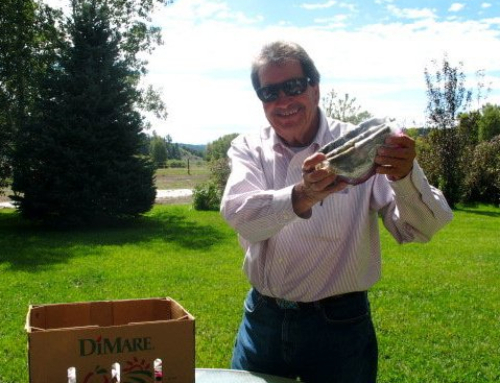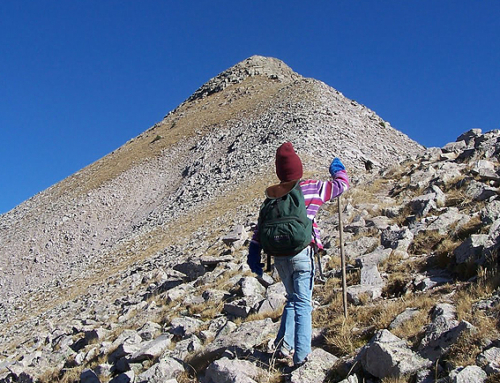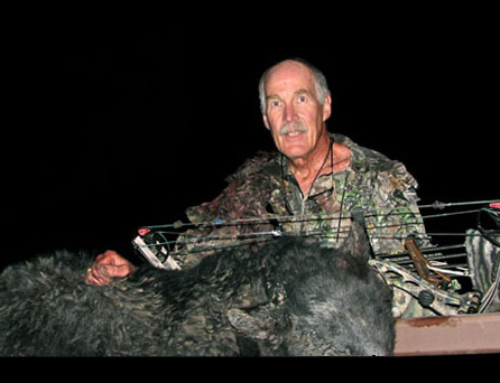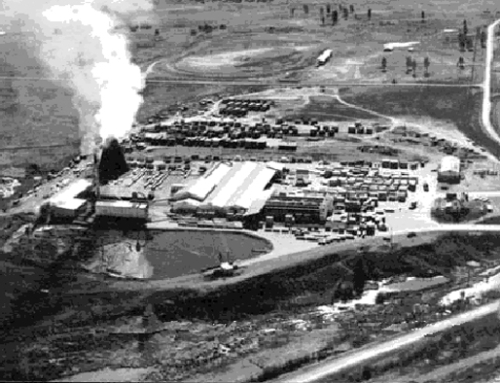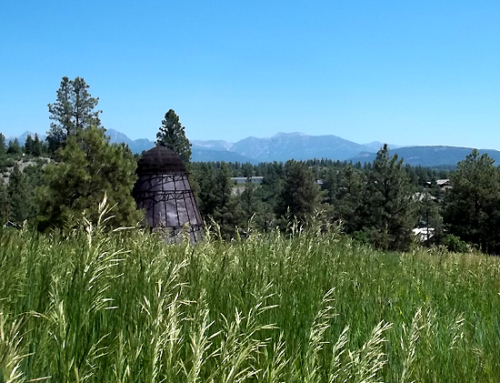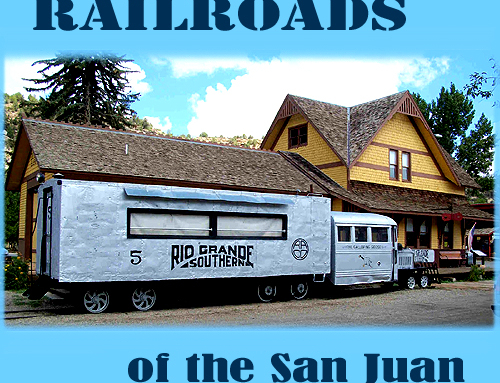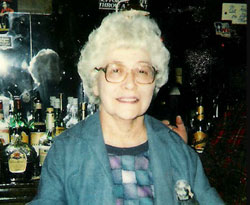
Margaret Archuleta-Daugaard
I first met Margaret Archuleta when I walked into the La Cantina Saloon and heard that legendary line, “Take your hat off, mister.” This “rule of the house” had been a long standing tradition at the saloon and I, as a newcomer, didn’t know. That was twenty five years ago now. I was there because I wanted to introduce myself as part of the country band playing that evening. Yes, I earned my first dollar in Pagosa Springs from Margaret, playing rhythm guitar in the La Cantina.
That evening began a long friendship with Margaret that I shall treasure all of my life. Soon after my short career playing music I began publishing The San Juan Adventure Guide magazine which was a recreation magazine but also included history. I found that Margaret and the late Emmett Martinez were living museums of Pagosa Springs’ and area history. I can recall hours spent in the La Cantina listening to Margaret’s tales of the past, once seeing tears on her cheeks as she went through old black and white photos of days gone by. In 1991 we celebrated the La Cantina’s 50th anniversary with an article in the Adventure Guide. Later, Margaret hosted my Hunter’s Harvest Ball and the Pagosa Country / Yukon Jack $10,000 Sled Dog Race party – big times in Pagosa’s past!
Margaret was proud of many things but she seemed most proud of the family heirlooms, once on display at the Smithsonian Institute. She allowed me to see, touch and photograph these artifacts of Pagosa’s and America’s past. See the heirlooms and read A Proud Spanish History inspired by Margaret.
In all of Margaret’s memories, her mother, known with great affection as “Mother Ruby” was prominent. Mother Ruby and later, Margaret, were the family and, in many ways, the county’s matriarchs. From their large brick house on main and from the La Cantina they presided over Pagosa Springs’ comings and goings for most of the twentieth century. Ruby passed some years ago and now Margaret. We have been honored by their presence and realize that women of their stature and nobility will not likely pass this way again.
A memorial service for Margaret Archuleta-Daugaard was held Saturday June 24, 2006. The service at the Immaculate Heart of Mary Catholic Church was followed by a luncheon at Parrish Hall and some of the attendees proceeded to the interment at the Archuleta-Daugaard Ranch.
Great traditions are born of great people and great times. Pagosa Springs has had the opportunity to spawn many great traditions. The extended Archuleta family of Archuleta County, the Pagosa Springs area and Northern New Mexico, has developed a legendary tradition in ranching and at the La Cantina Tavern in Pagosa Springs. A proud and noble Hispanic family, the Archuletas prospered in the area for many generations leaving their mark and name firmly stamped on the history and map of the countryside.
This article is a series of remembrances by Margaret Archlueta-Daugaard about her mother, known as Mother Ruby Archuleta, and her father, Lionel Archuleta; and the events of the area as seen from the perspective of the La Cantina Saloon, a fixture on main street from 1941 and lasting over 50 years.
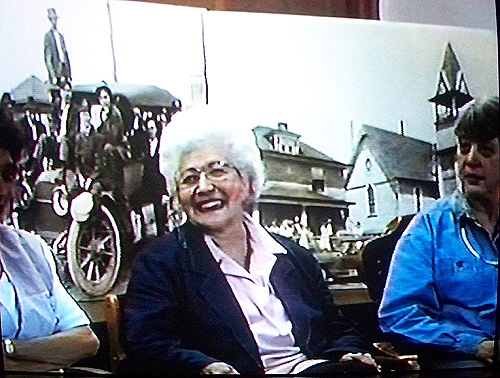
Margaret was proud of her family history spanning a time when Indians, Hispanics, Americans and “internationals” frequented Pagosa Springs and the La Cantina. Established in 1937 as the “Colorado Tavern,” it was 1941 when Ruby and Lionel Archuleta purchased the business from Alex Nelson.
Mother Ruby and Margaret reigned as the queens of main street for a generation. Margaret’s ranching and La Cantina life kept her strong, straight in posture, and charming. She was intelligent, witty and strongly independent, a lady in every respect.
This long time at the La Cantina gave Margaret a unique perspective on the “comings and goings” of Pagosa Springs. This includes the time period after the first pioneering days that less history is written about or generally known. To begin the process of getting some of this history recorded, I asked Margaret for an interview. As we began the interview, we sat at a small table with a lamp beside the bar in the saloon. Margaret admitted to being tired as she had spent the last several days out in the spring winds “calving” on the ranch. As soon as she began fingering through a box of old photos, random memories began filling her words. Soon she was smiling and laughing. Her face seemed to shine brighter than the lamp.
To put these memories into context, we should note that Pagosa Springs in the early to mid-twentieth century was considerably more remote than today. The roads were narrow and treacherous. What we know today as highways, county roads and forest access roads are luxurious compared to the rough trails of yesterday. Many of the hiking and off-road trails we know were once major avenues of transport. All roads got narrower as they approached Pagosa Springs, and it was a long journey from anywhere!
EARLY MEMORIES Many of Margaret’s early memories revolve around experiences with family and playmates. There was a gazebo near the 160 and Lewis Street intersection with a pipe vent flowing hot spring water. People passing by both felt the water and collected it for drinking. Young Margaret and friends had fun hard boiling eggs in the water. She also remembers going down Light Plant Road (now Hot Springs Blvd.) to the electricity generating station. It was located where the sharp left bend in the road is now. There was a sluice and ditch along this road built to carry water to power the generator’s turbine. Margaret and friends found the dark building full of whirring machinery, a real adventure and an excellent place to play “hide and seek.” The Pagosa Light Plant’s operator was Jose Espinosa, a lovable sort who had many daughters. He trained them to be excellent cooks. On warm summer afternoons he had them cook tubs of chicken, and invited the whole town to eat. Town ladies brought side dishes and Paulita Martinez contributed her prize peach cobbler for which she was known far and wide.
The kids of these days hung out at the Jackish Drug Store Soda Fountain and played the jukebox. A cherry coke was five cents, a milkshake a quarter. At other times they might wander down to the house of Betty and Emmitt Martinez’s (now Victoria Reigns) for a “taffy pull,” hot cocoa and a crank on the old record player for a jitterbug. Emmitt was a great soul and spent his career as pharmacist for the drug store. Margaret also confessed going for “skinny dips” in the spring along the river behind the present courthouse.
THE LUMBER DAYS Pagosa was a lumbering community. Small, portable sawmills were located in various areas and moved about as new roads were built to transport stands of good timber. The workers lived in tents or portable housing. Margaret and friends had fun traveling the area by hitching rides on the back of timber trucks continuously coming and going. They came to town often transferring logs to the train.
Among others, there was the Bunch Sawmill, the Belardie Sawmill, and the Ponderosa Sawmill. A lady Margaret knew, Lucia Belardie, awoke at 3:00 a.m. to begin cooking for their workers. The workers themselves had a very harsh life.
Margaret laughs remembering some years later at the La Cantina when a new group of tree cutters from Arkansas yelled “TIMBER.” This confused the Archuletas until they were told that “timber” yelled out in a bar to Arkansas timber cutters meant, “we buy drinks for the house.” They were welcomed to yell it all they wanted!
John Hudspeth moved to Pagosa Springs from Oregon and built a large sawmill at the junction of Hwy 84 and Hwy 160. This mill put the smaller mills out of business and became the largest employer in the area. Pagosa timber built houses in Denver and local aspen once provided chopsticks in Japan!
THE PINE GROVE HALL A fond memory is of the Pine Grove Hall which was a dance hall, saloon, and part time casino, located in Sunetha Flats near where Pagosa Lodge is now. This was during the “Big Band Era”, and one can imagine the tunes of Glenn Miller and others playing with romance in the air. The names in the local band of that time became pillars of the Pagosa community. Dieselkamp, Mullins, Catchpole, Risinger, and Lynch have all honored themselves in Pagosa’s history. Margaret remembers when special nights at the Pine Grove required a new dress and shoes. The Pine Grove had a gambling hall in the back where dice rattled long into the night. Margaret describes the law in the area as “a lot more open then.” A big night at the Pine Grove was the “talk of the town” for several days.
Another favorite of the men of this time was playing poker while locked in the bank vault. This bank was in the building at the corner across from the courthouse. (Were they hiding from the police or their wives, probably both!)?
Margaret remembers when Bill Lynn owned the hot spring and bathhouses. Europeans and other mineral spring users came by the thousands in the 1930s and 40s. They were known for evening cookouts over bonfires at the spring site, which was a treat for visitors and locals alike. The Lynch family brought the first limousine to Pagosa Springs. Margaret and friends would chip in twenty-five cents each for gas and ride around all day!
In 1941, during the Second World War, La Cantina served Pabst Blue Ribbon Beer from Durango and was allocated one case of hard liquor per month. After the war Margaret noticed many of the locals that left for the war effort didn’t return. “They were looking for a different life than a small mountain town allowed,” Margaret says. The faces across the old bar slowly changed during those years.
The La Cantina stocked fifteen brands of liquor during the post war years. The drink favorites were Tom Collins and Whiskey Sours. Margaret remembers the first Whiskey Sour she ever served. The customer asked if she always charged sixty cents for lemonade as she had forgotten the whiskey!
NO HATS! A tradition began early at the Cantina when Mother Ruby declared, “No hats in the saloon. If any man is going to take a lady out to dance, he is going to take his hat off!”
In the early 1950′s the country was booming, and big game hunting was popular. Margaret remembers 1952, when a hunter from Texas crossed over the establishment’s line. The customer was escorted to the door and asked to leave for his indiscretions and for refusing to take his large cowboy hat off. After a time in the cool autumn air, he returned offering Margaret an apology. With his hat off and head hanging low, he was allowed in. It should be noted in Pagosa Springs’ history that Margaret once “bounced” Lyndon Banes Johnson onto the sidewalk downtown. In 1953 the government “allowed” Indians to drink legally. Colorado adopted the law one year before New Mexico. Margaret remembers New Mexican Indians coming to town and peeking in the La Cantina’s door to see if the new law was true. They were welcomed in the tavern, even though they had a strange characteristic of wanting to pour their own drinks.
A new round of faces appeared in 1958 when Artie Peterson and his crew brought the telephone system to Pagosa Springs. They requested different brands of liquor – the most popular being Jim Beam.
TUNNELSTIFFS Two major projects brought new groups of workers to the area. One was the San Juan-Chama diversion tunnel. The project was the first to use new laser-cutting tools, which brought an international set of mining experts and workers to town. They enjoyed taking photos of the locals and cowboys. The project employed 1400 people, and there were only three taverns in town. A friend of Margaret’s, Ron Hudspeth, complained of no place to sit.
This tunnel carries water from the Blanco River to the Chama/Rio Grande River, or from the west to the east side of the divide, sending Pagosa water to Texas. It can be found on a forest service map starting eight miles east on the Blanco Road. It resurfaces several miles south near Chromo on Price Lakes Road. It was dug between 1963 and 1972.
PIPELINERS The other project was a gas pipeline, put in over Elwood Pass and down the East Fork of the San Juan River in the first few years of the sixties. Margaret served the “Tunnelstiffs” and the “Pipeliners” at the La Cantina. The saloons, entertainment, restaurants and much of Pagosa hummed to the tune of shift changes on the projects. These were hard living and hard working men. Margaret remembers four Clark brothers who were famous for finishing a case of Jack Daniels whiskey each weekend! A man named Kay Jones came to the saloon regularly with a bushel basket full of money and bought drinks for everyone. Although he carried the basket around in his truck, he was never robbed!
During 1966 the Cantina was expanded, and on New Year’s Eve of 1966 the work was done, but the new furniture hadn’t arrived. The local customers brought their own dinette sets and nearby churches lent chairs. One hundred and fifty bottles of champagne were served that evening. All present were proud of their work and the new La Cantina.
COWBOYS For many years cowboy films were popular, and many were staged in the Pagosa area. Many scenes from some of John Wayne’s films were shot up the Piedra Road, and Wayne stayed in a cabin near the hot spring. Ruby and Margaret served John Wayne, Barbara Stanwick and other stars of the time.
PAGOSA DISCOVERED Margaret remembers when the Pagosa area was “discovered” by property developers in the early 1970s. Suddenly there were new people moving to the area. Margaret watched from La Cantina as frictions between new and old came and went as the area struggled into newer times. One developer leveled off a hilltop in Pagosa, and large new houses went in overlooking the town. The locals quickly nicknamed the area “Snob Knob.”
By 1972 realtors, developers, tourists and locals were listening to popular entertainer, Florence Paul, at the piano bar. Margaret remembers Florence played “classical to bumming around music” and would play a customer’s favorite song as they walked in the Cantina’s door.
CHOPO’S RIDE Hunters have always come to the San Juan area. A local favorite of hunters was a diminutive fellow named Chopo. It became tradition for hunters to carry Chopo on their shoulders. Every time he ordered a drink, or a drink was ordered for him, a second drink was passed up to Chopo. By evening’s end Chopo was listing, snoring and dripping wine from his chin onto the hunter’s head.
FRED HARMAN Fred Harman was known for having a boys’ camp located on his ranch. He had Indian Powwows and parties at which Lola Harmon played piano. The piano was a large beautiful upright, and Fred invited local ranchers to burn their brand into the polished wood. Lola was a very understanding lady!
Margaret also remembers “Lady Larson”, a local farmer who went about in bib overalls smoking a pipe. She became a main character in Fred Harman’s Red Ryder comic strip. Another memory is of Mr. Goodman pacing up and down main street greeting people by saying, “You need a new pair of shoes today.” His personal advertising evidently worked well because the Goodman’s continue to operate the department store.

